Juvfonne is a small (400 by 200 m) ice patch in Jotunheimen. Normally, it would be too small to feature on Glacierchange, but for this special one we make an exception.
In Jotunheimen there are hundreds of small ice patches, also known as glacierets. They form in sheltered places: on the leeward side of mountains and shaded from the sun, commonly on north and east facing slopes. Contrary to mountain glaciers, ice patches are frozen to the ground. They therefore don’t slide over their bed. Another difference is their temperature: while glaciers are normally at freezing point (0 degrees), the ice of Juvfonne has a temperature of -2 to -4°C.
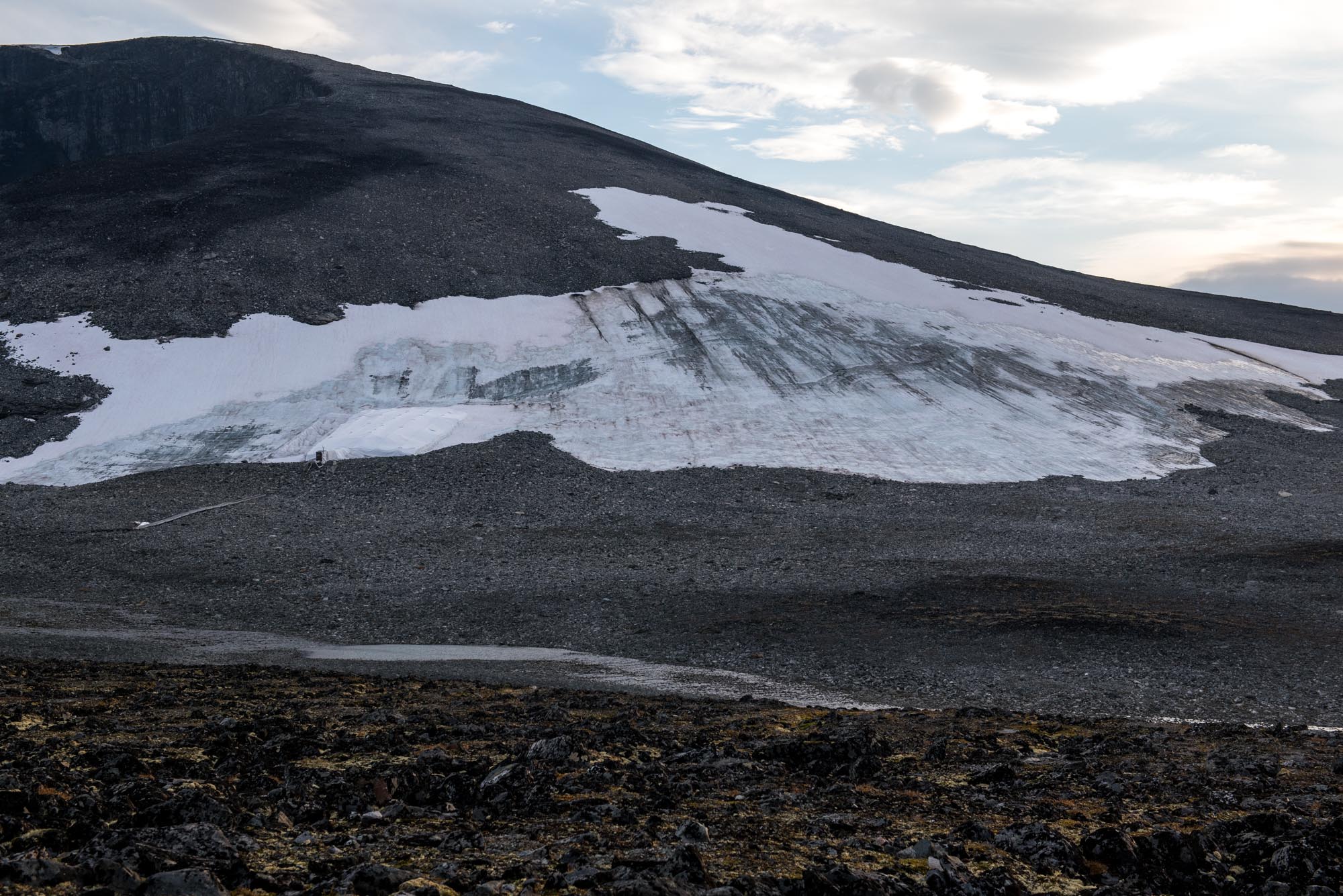
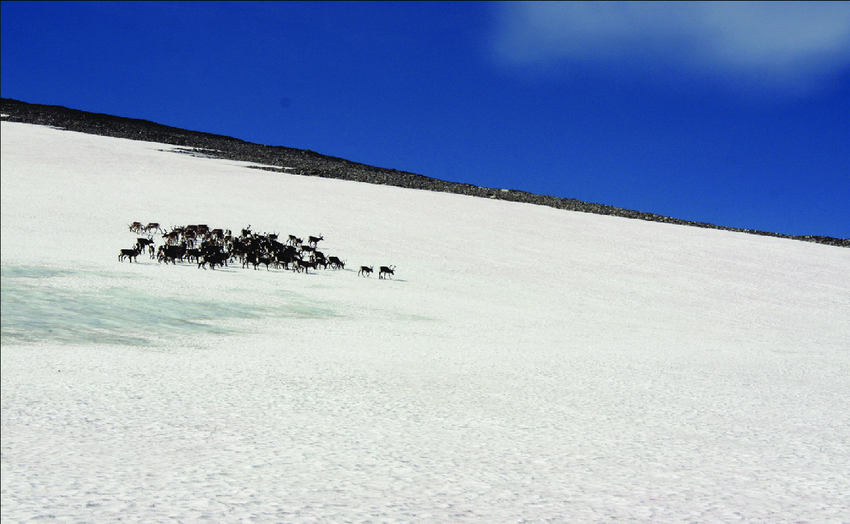
Reindeer use ice and snow patches in summer to escape the heat and insects. Arctic summers are known for their mosquitos, and reindeer seek refuge from them on ice patches. But other dangers lure: humans. Since prehistoric times people have known about this behavior of reindeer, which make these places popular hunting grounds.
Because of the absence of movement, ice patches preserve artefacts very well in a frozen state. Combined with the long history of hunting activities, they are hotspots for archaeological finds. That first became clear in the 1930’s, when a phase of strong melt uncovered grounds that had been covered by ice patches for thousands of years. But it was nothing compared to the current climate, which makes ice patches disappear rapidly.
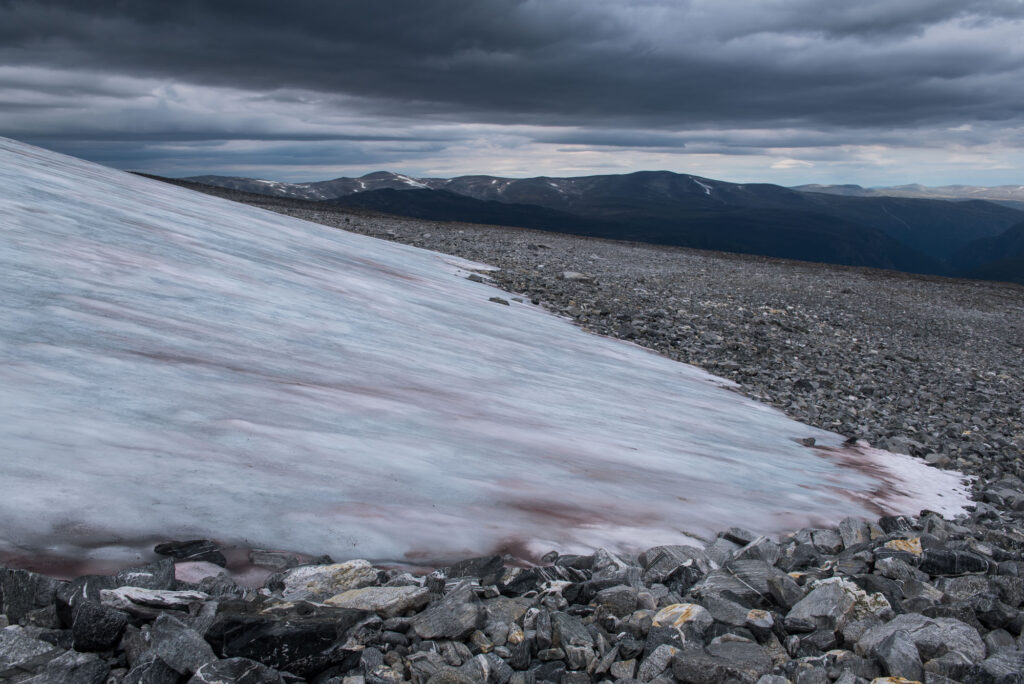
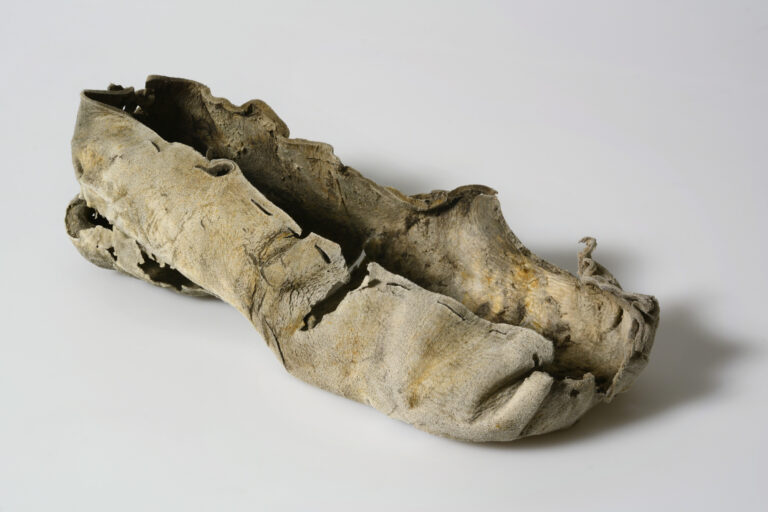
Most artefacts that have been found so far are from the Iron Age and Medieval Period (300-1600 AD) and include iron and bone arrowheads, bow fragments, sticks and spades (Nesje et al., 2012). Some finds are much older, like a leather shoe of 3400 years old! It was found at Kvitingskjølen, only 20 km northeast of Juvfonne.
Juvfonne itself is also a prime location of prehistoric artefacts. Here, people traditionally hunted for reindeer with a system of hunting blinds (low stone wall to hide behind) and scaring sticks (rows of movable sticks to lead reindeer towards the blinds). Dating of some of the finds revealed that they come from 250-500 AD and 800 AD, so over 1200 and 1500 years old (Nesje et al., 2012).
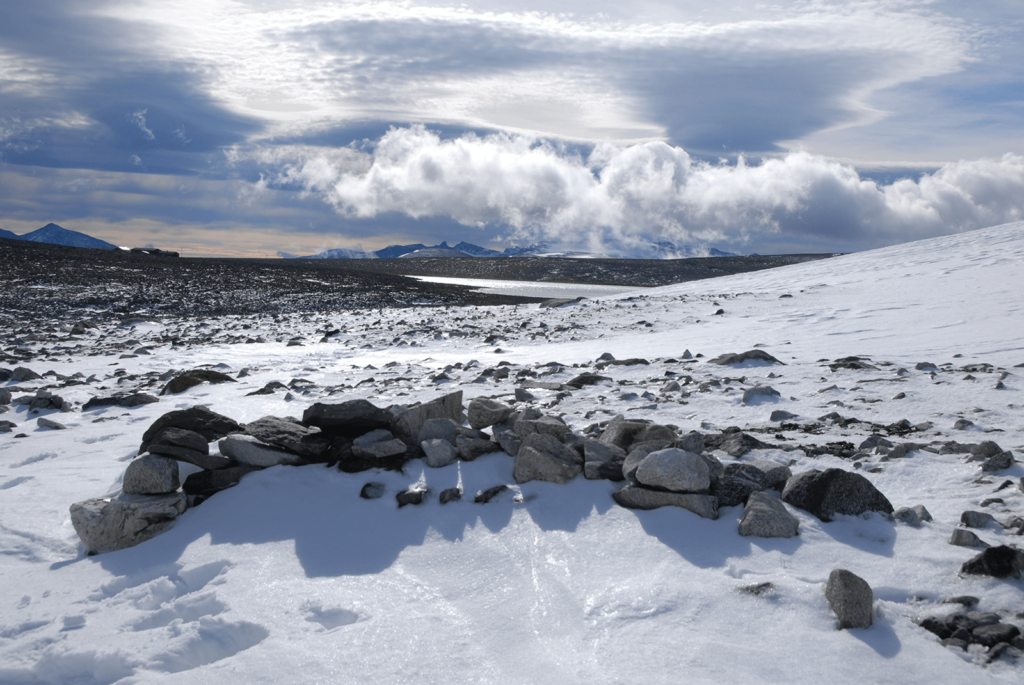
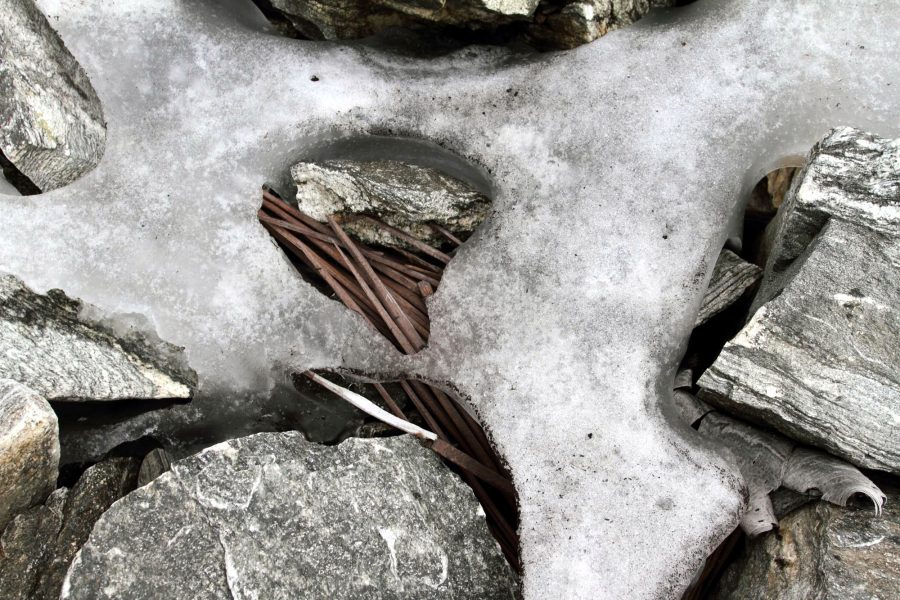
The wooden artefacts are susceptible to decomposition and could only be preserved for hundreds of years if they were covered by snow and ice soon after their deposition. Once buried, they must have been incorporated in the ice patch until melting out in the early 21st century. This means that Juvfonne is now smaller than it has been in at least 1500 years. Moss mats melting out at the edge of the ice patch in 2014 showed that Juvfonne is even the smallest in at least 2000 years (Ødegård et al., 2017). But there is more.
In the spring of 2010 an ice tunnel was excavated in the Juvfonne ice patch. After it quickly melted away, a longer one was dug by hand in 2012. The 70 m long tunnel gives access to the central part of the ice patch, providing excellent opportunities to sample deeper ice layers. Carbonaceous aerosols (organic dust) embedded in the snowfall were dated. The deeper the ice, the older, as expected. But it was a big surprise that the basal ice is as many as 7500 years old (Ødegård et al., 2017).
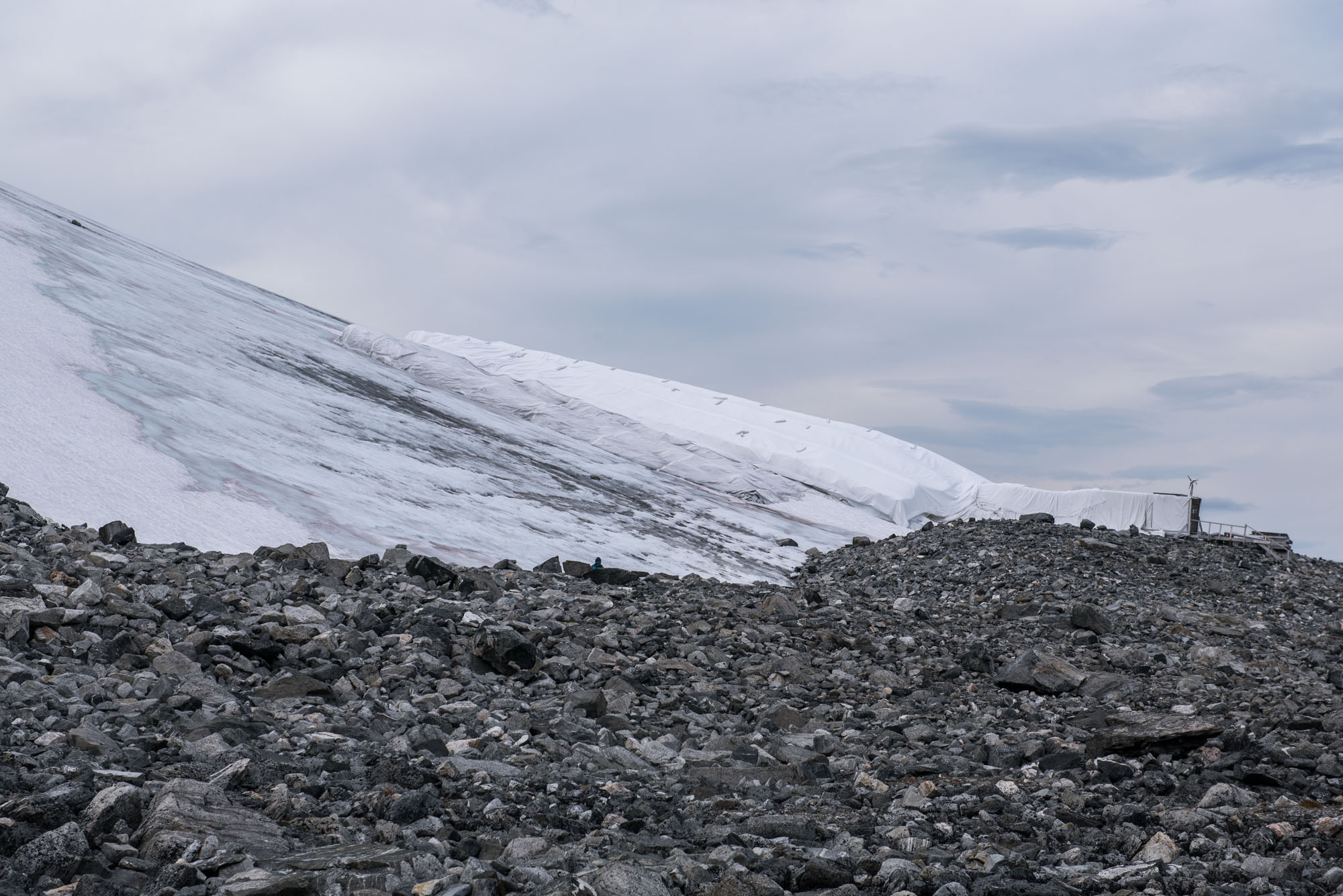
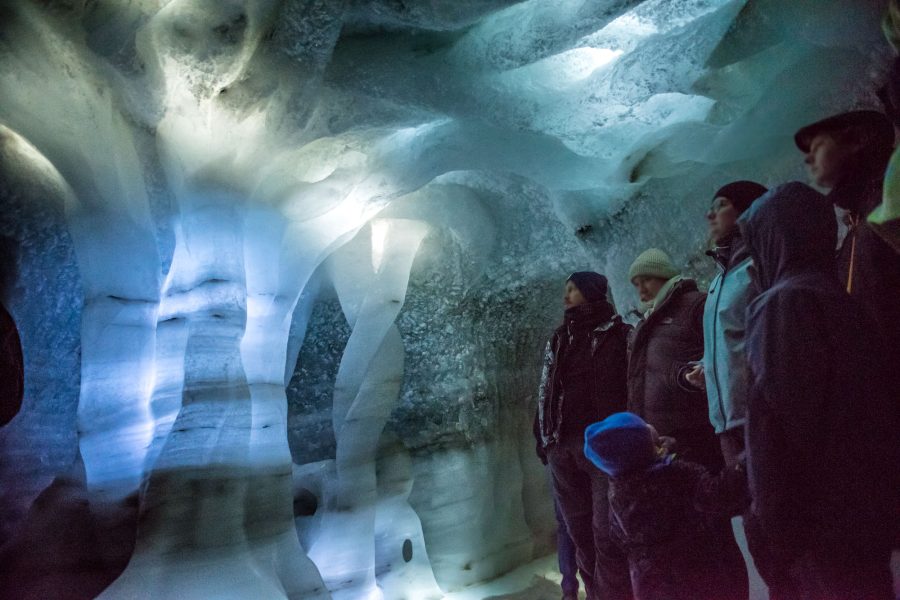
The ice tunnel was not made for scientists only; it’s also a tourist attraction run by Klimapark2469. Therefore, it comprises of much more than just a hallway into Juvfonne: the tunnel leads to a central room surrounded by a ring connecting multiple chambers. It feels like a maze, not in the least because of the magical sculptures in the ice caves. They are inspired by Norse mythology and designed (and lit) by the artist Peter Istad.
In 2019 two new rooms were added to the ice cave system. They are located deeper in the ice patch and have everything to do with climate change. In one room, an enchanting globe represents our planet, in the other a set of columns and a table portray the climate dialogue. Together with the display of (replica’s of) artefacts, the ice tunnel helps a wide audience to experience climate history and change.
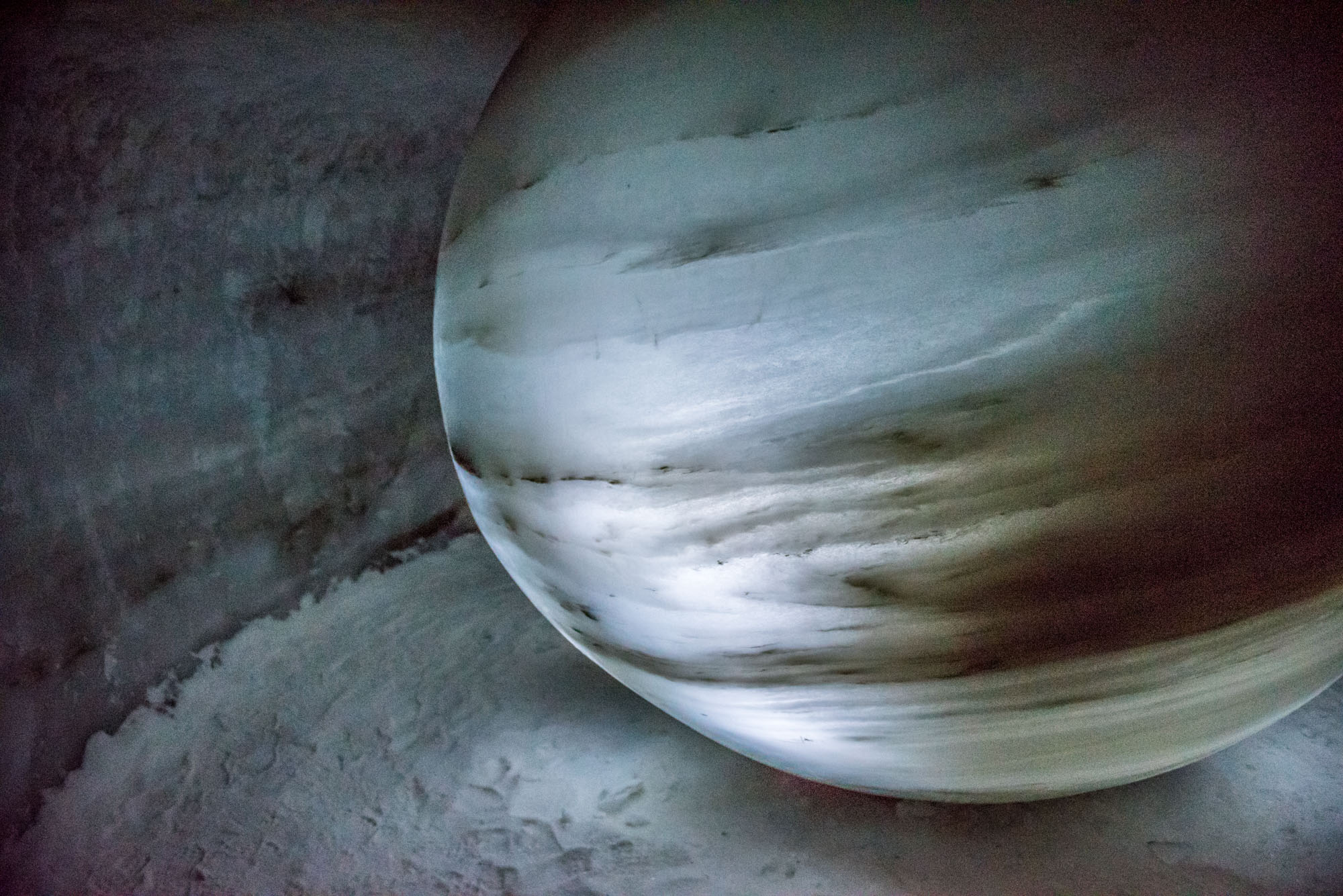
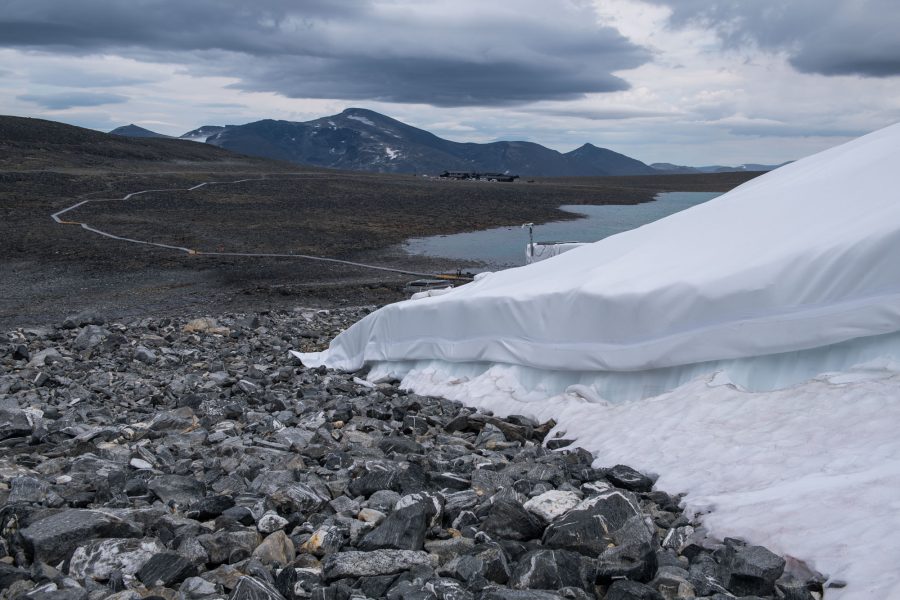
Juvfonne is thin, like all ice patches. In the central parts the ice is some 15 thick, but on average Juvfonne is only 5 m thick. In the period 2011-2014, ice loss was up to a meter per year (Ødegård et al., 2017). As a result, the ice patch is shrinking and can’t survive the present-day climate. To keep the ice tunnel in operation for as long as possible, people cover it with huge white canvases every summer to slow down melt.
Now ice patches are disappearing rapidly, it’s a race against time to search for artefacts melting out. Especially textiles, leather and feathers (for arrows) decompose very quickly. With every meter of recession, older histories might be uncovered. But where do the reindeer have to escape from insects once all the ice is gone?
Search within glacierchange: